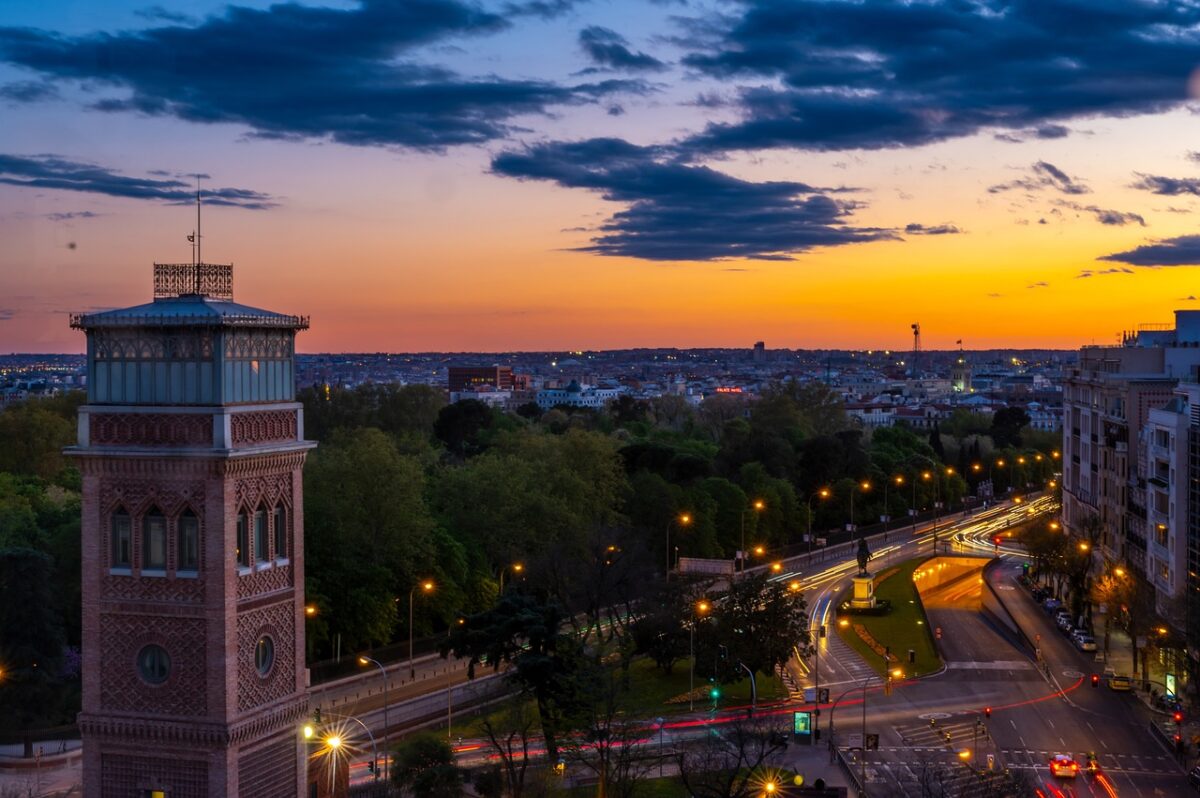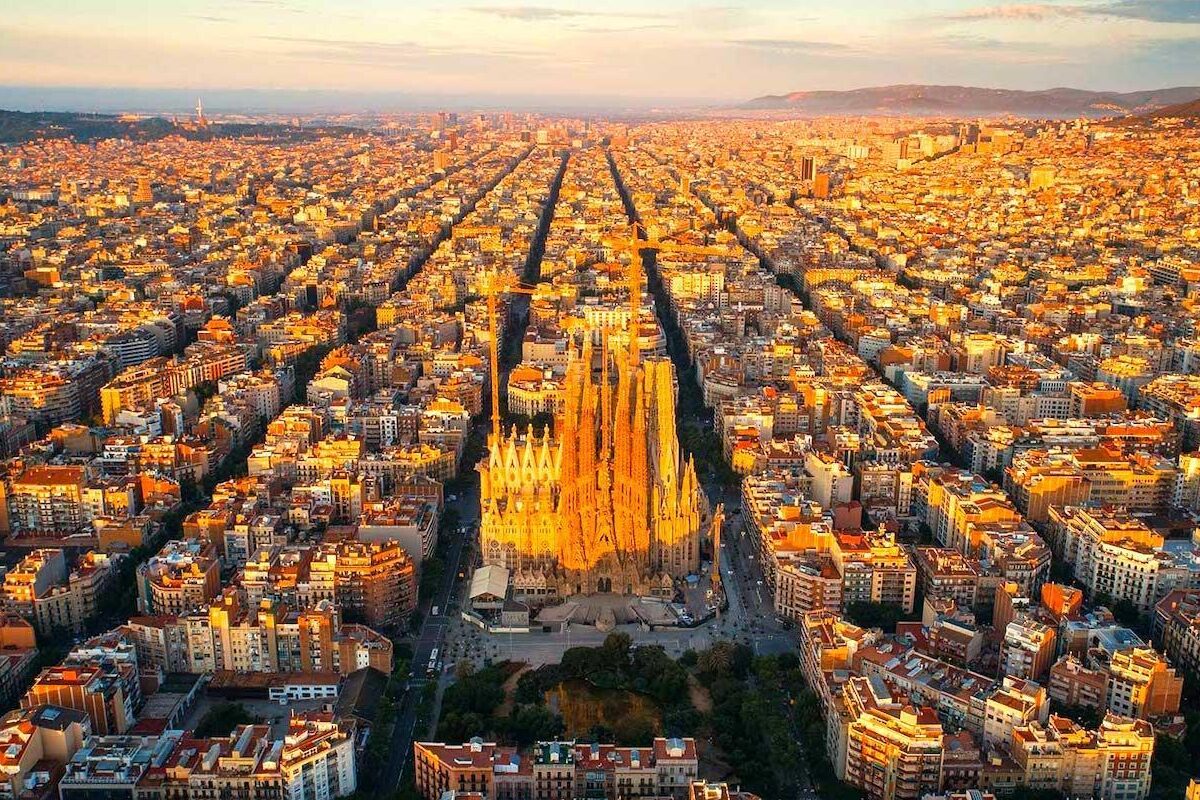Guide to the regions of Spain
Spain is made up of 17 autonomous communities known as Comunidades Autónomas. They, in turn, are divided into provinces, of which there are 50. It is not for nothing that the Spaniards call the country the “State of Regions”.
Sunny Spain ranks second in Europe in terms of the number of tourists. It attracts 7% of the world’s tourist flow, thanks to which the state budget receives about 50 million euros annually. And this is not surprising. Warm seas, beautiful beaches, stunning scenery, excellent cuisine, a wealth of archaeological, architectural, and cultural attractions, and endless opportunities for active recreation — what more do you need for the perfect holiday?
Each region of Spain has something special to offer its guests. Traveling around the country, you will see Roman amphitheaters, Moorish palaces, and medieval fortresses, admire snow-capped peaks and enjoy the sun on fabulous islands, taste the freshest seafood and world-class wines. Where to go, what to see, and what to do — we have collected all the most interesting things about each of the regions of Spain in this article.
Canary Islands
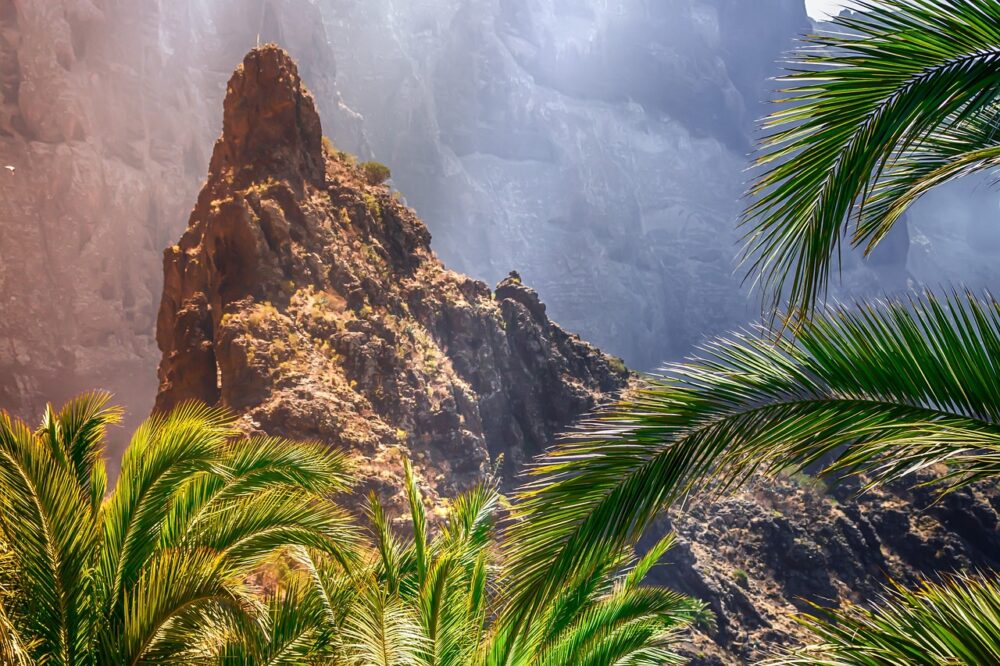
The Canary Islands are the southernmost of the autonomous communities of Spain. It includes two provinces — Las Palmas and Santa Cruz de Tenerife. The archipelago, located off the northwestern coast of Africa, is considered one of the best places for a beach holiday in Europe. Its pleasant climate, beautiful landscapes, unique flora and fauna, and special cultural traditions attract more than 12 million travelers a year. The main Canary Islands tourist destinations are Tenerife, Gran Canaria, Lanzarote, and Fuerteventura. And lovers of a relaxing holiday should visit the islands of El Hierro, La Palma and La Gomera.
Gran Canaria
Gran Canaria is the third largest island of the archipelago. Its capital, Las Palmas, boasts not only interesting sights but also an impressive gastronomic scene. Among the most popular Gran Canaria tourist destinations are the dunes of Maspalomas, where you can go sandboarding and watch the sunset, Caldera de Bandama, one of the natural wonders of the archipelago, Teror, considered the most beautiful town on the island, and the fishing village of Puerto de las -Nieves, famous for its traditional Canarian architecture. But the most important thing is the fabulous holiday resorts on Gran Canaria. Here you will find both adults-only retreats and luxury hotels for families.
Gran Canaria will especially delight beach lovers. Picturesque embankments, bright green palm trees, kilometers of golden sand, clear turquoise water — this, without exaggeration, is a paradise. Maspalomas Beach is considered one of the most beautiful beaches in Gran Canaria and all the Canary Islands. It is located in the southern part of the island, surrounded by the fantastic dunes of the Dunas de Maspalomas nature reserve. Some of the city’s best beaches include Playa Las Canteras, Playa de las Alcaravaneras, and Playa de Mogán. And those who crave privacy should visit Gui Gui Beach.
Tenerife
Tenerife is the largest and most populous island of the Canary archipelago. It is famous for its historical sites, archaeological sites, traditional architecture, excellent seafood, and unique cheeses. Teide National Park in Tenerife is home to Spain’s highest peak, Mount Teide, which is the fourth highest active volcano in the world. The island’s most famous landmark is the Humboldt Viewpoint, from which you can admire panoramic views of the cities and volcanoes of Tenerife.
The capital of the island and its largest city is Santa Cruz de Tenerife. Arriving here, you can visit the famous opera house Auditorio de Tenerife, stroll around the large artificial lake at the Plaza de España, look at the Guanche mummies at the Museum of Nature and Man (Museo de la Naturaleza y el Hombre), and enjoy the sun on the Playa de Las beach Teresitas.
Lanzarote
Lanzarote is the easternmost of the Canary Islands and is a UNESCO biosphere reserve. Its main attraction is the Timanfaya National Park, stunning with its volcanic landscapes. The best way to see all its wonders is on a bus tour, which includes a trip to the volcano and a walk through the lava fields.
Another place where you can admire the bizarre formations of solidified magma is Cueva de los Verdes. This is a cave that appeared as a result of the eruption of the Monte Corona (La Corona) volcano. Also, do not miss the Cactus Garden (Jardín de Cactus), the Los Hervideros cave group, the Costa Teguise tourist complex, which is famous for its beautiful beaches, as well as the picturesque town of Aria, located in the shadow of a volcano. And be sure to visit the Valle de La Geria winery to taste exquisite wine made from grapes grown on volcanic soil.
Lanzarote is the birthplace of Cesar Manrique, one of the most famous artists and sculptors of Spain. Much of the island is an open-air museum of his work. Inside a volcanic bubble in Taiche, he built his first Taro house in the style of the ancient stone buildings of Lanzarote. At the top of the Risco de Famara mountain range, he created the famous Mirador del Río observation deck.
Fuerteventura
Fuerteventura is the second largest Canary Island after Tenerife. Numerous snow-white beaches stretch along its coastline, for which tens of thousands of tourists come here. Thanks to constant winds and high waves, Fuerteventura is considered a paradise for surfers and windsurfers.
If waves are not your thing, head deeper into the island. You’ll see picturesque volcanic mountains, walk through the sand hills of Corralejo Dunes, explore the sea caves of Ajoy, enjoy the unique atmosphere of old cities, and admire works of street art. Those who come to Fuerteventura with children should visit the only Acua water park on the island, located in the city of Corralejo.
El Hierro
El Hierro is one of the smallest of the Canary Islands. In 2014, it was declared a UNESCO Geopark, so 60% of its territory is protected. El Hierro breaks all stereotypes about holidays in the Canaries. Although there are many beautiful beaches perfect for diving and other water sports, the highlight of the island is eco-tourism. Guests are invited to visit the Gorona del Viento wind power plant and learn about the conservation program for the endangered El Hierro giant lizard.
El Hierro’s most impressive natural feature is the El Golfo depression, which was formed by an earthquake 50,000 years ago. You can admire this incredible spectacle from the Mirador de la Peña observation deck.
The main diving center in El Hierro is the fishing village of La Restinga. You will have the opportunity to explore underwater rocks and caves and see stingrays, dolphins, turtles, and whale sharks. The best sea pools are in La Maceta, Charco de los Zargos, and Charco Azul. Sunbathing lovers should head to the beaches of Playa de las Arenas Blancas and Playa del Verodal. For connoisseurs of fine wines, we recommend visiting the vineyards of Bodega Uwe Urbach, Bodega Elysar, and Bodega Soterana.
La Palma
La Palma is considered one of the most beautiful and quiet among the islands of the Canary Archipelago. Here you will walk through dense forests with giant ferns, admire stunning starry skies and seas of clouds, relax in natural pools, and relax on the golden sand of secluded beaches. One of the must-see places in La Palma is the Caldera de Taburiente National Park. On its territory is the famous Caldera de Taburiente, an 8-kilometer-wide crater that is the site of several volcanic eruptions. You can see all the beauty of the park from the stunning observation deck of Roque de los Muchachos — the highest point of the island.
La Palma is famous for its beautiful beaches. The most popular among them is the black sandy Playa de Nogales. It is great for surfing and an excellent swimming spot. It is also recommended to visit the beaches of Puerto Naos, La Veta, Tazacorte, and Nueva.
La Gomera
La Gomera is the third largest of the 8 main islands of the Canary archipelago. Most tourists come here for a quiet holiday, beautiful scenery, and exciting hiking. The first place worth exploring when arriving on the island is the Garajonay National Park, which looks like a fairy-tale forest. Here is the highest point of La Gomera — Alto de Garajonay (1487 meters).
Lovers of beautiful views should go up to the impressive Mirador de Abrante observation deck. And connoisseurs of traditional architecture should take a stroll through the village of Agulo. It is located about an hour’s drive from the capital of La Gomera, the city of San Sebastian, which is also recommended to spend at least a few hours visiting. It houses the main port of the island, where ferries from Tenerife arrive, and two beautiful beaches — Playa de la Cueva and Playa de San Sebastian.
The most popular activity in La Gomera is whale watching. Nature lovers will also enjoy trips to El Cedro Forest and Mayona Rural Park. Those who want to try excellent seafood dishes can visit Playa de Santiago, a coastal enclave where the island’s airport is located.
Cantabria
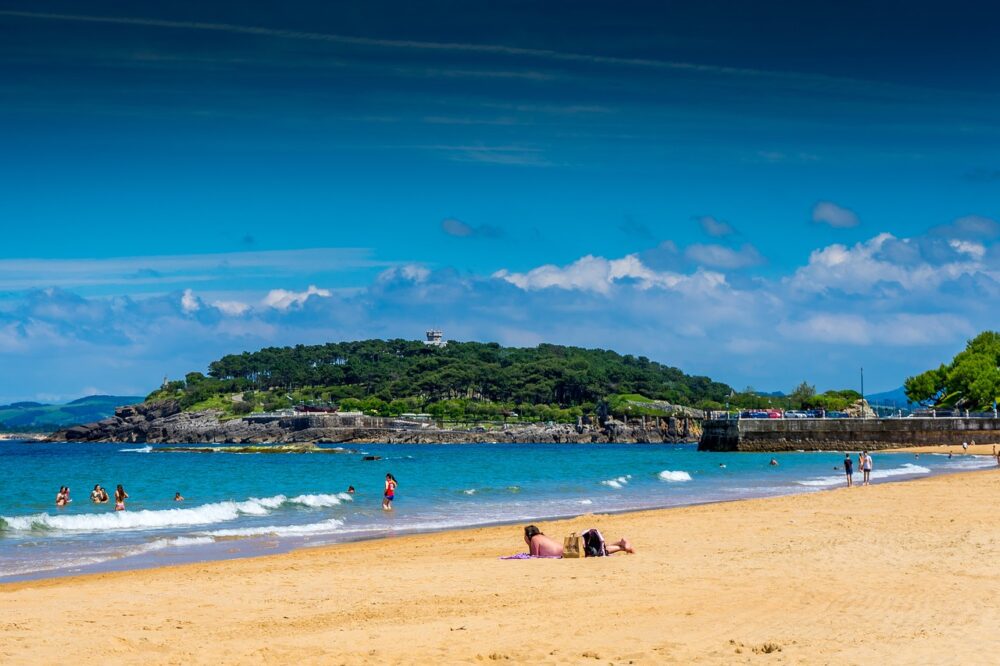
Cantabria is located in the north of the country — between Asturias and the Basque Country. One of Spain‘s smallest provinces, it’s an impressive combination of incredible beaches, wild rivers, picturesque mountain peaks, beautiful towns, and fascinating archaeological sites. One of the iconic landmarks of Cantabria — Altamira cave, which gained world fame thanks to ancient rock paintings. It is closed to visitors, but all its wonders can be seen in the museum located nearby.
The capital of Cantabria is the city of Santander. Its crown jewel is the stunning Sardinero Beach, covered in golden sand. In addition, Santander attracts tourists with numerous museums, art galleries, and theaters. Here is the famous Palacio de la Magdalena, a majestic palace that was once the residence of the Spanish royal dynasty.
For a trip back in time, head to the medieval village of Santillana del Mar, a true open-air museum. Its narrow cobbled streets are lined with beautiful houses with flower-covered balconies. The iconic landmark of the village is the Colegiata de Santa Giuliana, a Romanesque church built in the 12th century.
If you’re planning to visit Cantabria, add to your bucket list trips to the El Soplao cave and the city of Laredo, a ride on the Fuente De cable car, a walk through the Cabarceno Natural Park, and a tasting of dishes in the fish restaurants of the village of San Vicente de la Barquera. Those who want to get acquainted with the traditional cuisine of Cantabria should go to the city of Potes, located in the heart of the province.
Valencia
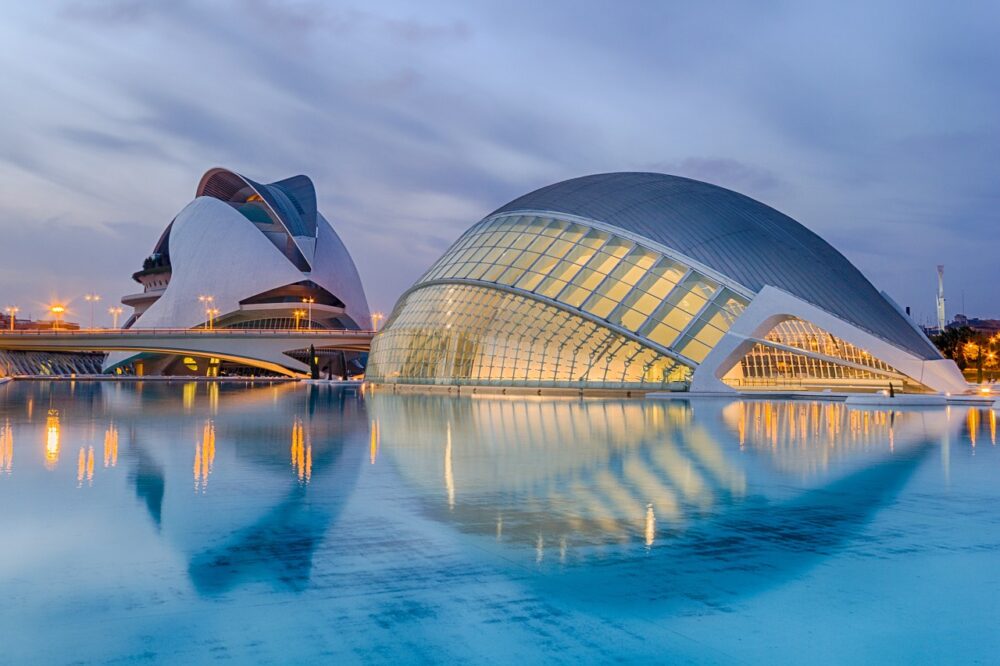
Want to try the best paella in Spain? Then head to the Valencia region, which is considered the birthplace of this national dish. It is famous not only for its cuisine but also for its stunning beaches, picturesque towns, and rich cultural heritage. And also colorful festivals, the most striking of which is the Fallas festival, held in the capital of the region — the city of Valencia.
Valencia includes three provinces — Valencia, Castellon, and Alicante. A good place to explore the region is by visiting the historic town of Sagunto, famous for its Roman heritage. In addition to archaeological and architectural monuments, here you will find the stunning L’Almardà and Corinto beaches, where you can enjoy swimming in the warm waters of the Mediterranean Sea.
The list of best places to visit in Valencia also includes Lliria, which claims to be the UNESCO City of Music, the Albufera Natural Park, the Iron Age town of Requena, the Cera Geological Park, and the Utiel-Requena wine route. And of course, we must not forget about the capital of the region — the city of Valencia. Here you must visit the City of Arts and Sciences, Mercat Colón, Institut Valencià d’Art Modern, Oceanografic Valencia (L’Oceanografic), Malvarrosa Beach, Museum of Fine Arts and La Lonja de la Seda (Silk Exchange). And those who come to Valencia with children will enjoy the Bioparc Valencia and the unusual Parque Gulliver, designed based on the famous work.
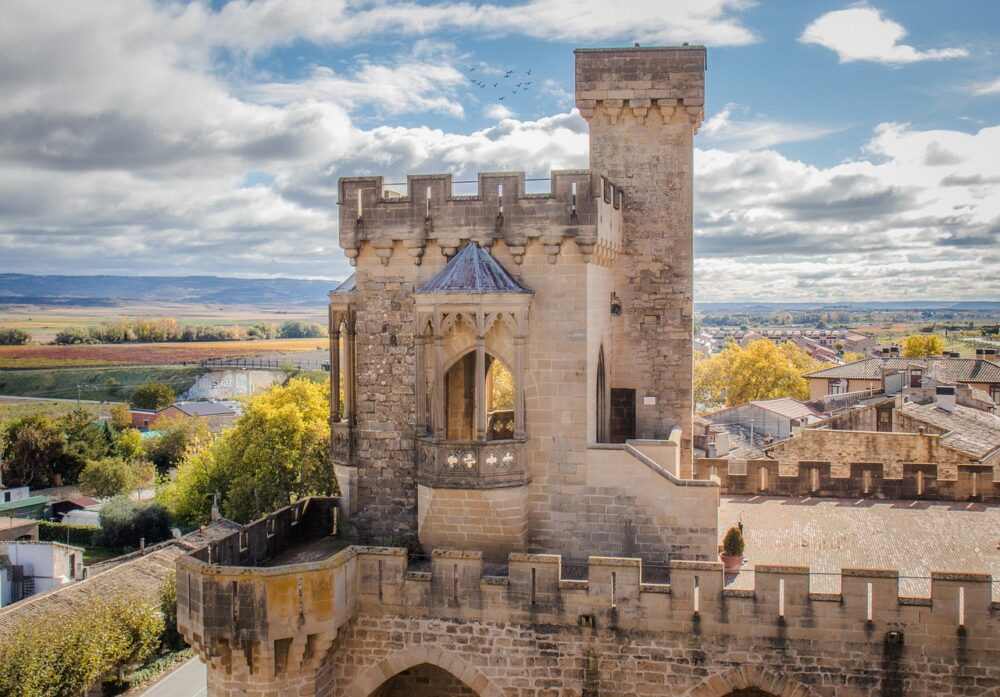
Although Navarra is one of the most epic and beautiful regions of Spain, it is not very popular among tourists. Known for its natural attractions, parks, rich culture and history, and ancient castles, it can be an ideal destination for outdoor enthusiasts. Tasting traditional dishes, hiking, cycling, or just sightseeing tours — there is something for everyone here.
Anyone who comes to Navarre should get to know its monasteries and churches. The most famous among them is the Leyre Monastery, founded in the 11th century. Some of the best things to do in Navarre also include visiting its majestic castles. It is recommended to start with Olite Castle, which was once a royal palace.
One way to get to know Navarre is to try its traditional cuisine. To start, order Piquillo peppers at the restaurant — a dish of potatoes, onions, peppers and tomatoes, Idiazabal cheese, and Navarrese lamb.
The best places for hikers are the Irati Forest, the Urbasa Nature Park, and the Bardenas Reales Nature Reserve. And of course, a trip to Navarre would not be complete without a visit to its capital, Pamplona. Here you can visit the famous bullring, explore the Cathedral of Santa Maria, stroll through Riverside Park, and explore the ancient city walls. And in July, Pamplona hosts one of the largest festivals in Spain — San Fermin.
Aragon
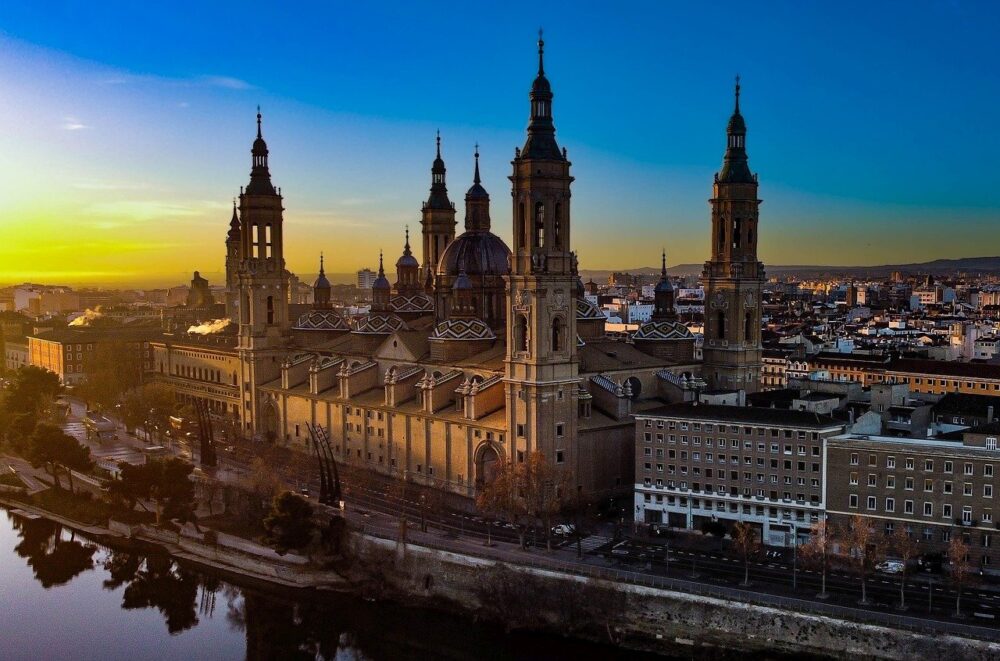
Aragon is one of the most beautiful regions of Spain. It is located in the northeast of the country and includes three provinces — Zaragoza, Huesca, and Teruel. Aragon attracts connoisseurs of antiquities with a large number of historical monuments. For thrill-seekers, it offers a variety of active entertainment. And those who admire the beauty of nature will be enchanted by stunning mountain landscapes. This region contains the highest peaks of the Pyrenees.
Arriving in Aragon, visit the Aljaferia Palace in Zaragoza, explore the Ordesa and Monte Perdido National Park, learn about the tragic story of the lovers from Teruel, and discover the beauty of the Monasterio de Piedra Natural Park. And be sure to enjoy your stay in Zaragoza, the region’s charming capital.
The list of the most interesting things to do in Aragon also includes trips to its picturesque villages. First of all, we recommend visiting Albarracin, famous for its medieval architecture, and the charming Ainzú. Aragon has several historical routes, including the famous Camino de Santiago. During your trip, you will be able to explore the landscapes, culture, and heritage of the region.
Getting to know Aragon would be incomplete without tasting its traditional dishes. Among the most striking gastronomic masterpieces is ternasco, a delicacy made from roasted young lamb, seasoned with local herbs and spices. Also worth trying are migos — a dish of breadcrumbs with chorizo, bacon, and fried eggs, chiretas — sheep intestines stuffed with rice, vegetables, and spices and, of course, the famous jamon de Teruel. The Somontano region is known for its exquisite red, white, and rose wines.
Castilla-La Mancha
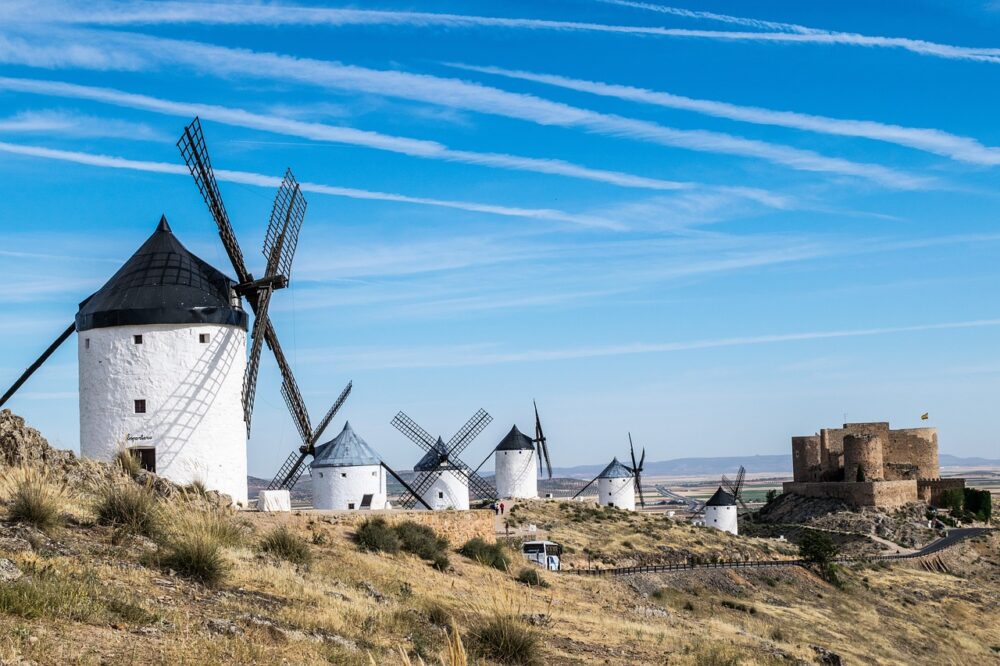
The autonomous community of Castilla La Mancha is the setting of Miguel de Cervantes’ famous novel Don Quixote. Tourists come here to see ancient castles and windmills, walk the streets of historical cities, taste excellent wines, and enjoy traditional dishes. The community includes the provinces of Albacete, Toledo, Ciudad Real, Cuenca, and Guadalajara.
The pearl of Castilla la Mancha is the city of Toledo, which is the seat of government and parliament. For many centuries it was the capital of the Spanish Empire. Some of its most famous attractions include the Cathedral de Toledo, the Monastery of San Juan de los Reyes, the Museum of Santa Cruz, and the El Greco Museum. To get into the spirit of this ancient city, just wander through its streets. And you should look into the workshops where swords are still made from the famous Toledo steel.
One of the most beautiful places in Castilla La Mancha is the rock-hewn city of Cuenca. Its symbol is the famous hanging houses, the balconies of which offer stunning views of the river. Fans of Cervantes’ novel should visit the province of Guadalajara. It is not only the birthplace of Don Quixote but also a real treasury of ancient palaces. The mills that inspired Cervantes’ famous episode of the battle with the giants are located on the Calderico ridge.
If you are interested in gunsmithing, take a trip to Albacete. Since ancient times, this province has been famous for the quality of its steel, from which unsurpassed swords and knives were made. The exhibition of the Museo de la Cuchillería tells about the ancient traditions of their forging.
In the province of Ciudad Real, tourists also have something to do. In its capital of the same name are the Don Quixote Museum and the Cervantina Library (Museo del Quijote —Biblioteca Cervantina). Nature lovers will enjoy walks in Parque Nacional de las Tablas de Daimiel and the Cabañeros National Park. Also in Ciudad Real is Almagro, which is considered one of the most beautiful cities in Spain.
Castile and Leon
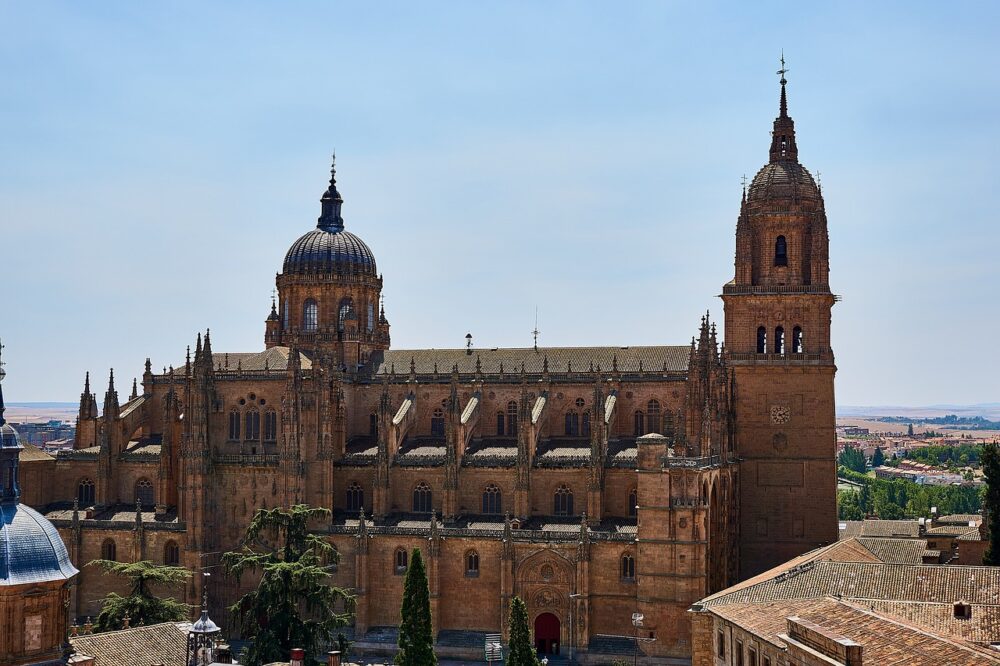
Castile y Leon is the largest autonomous community in Spain, located on the border with Portugal. It includes 9 provinces: Avila, Burgos, Leon, Palencia, Salamanca, Segovia, Soria, Valladolid and Zamora.
The Castile and Leon region is home to 11 UNESCO World Heritage Sites. These include the historic city of Salamanca, a veritable treasure trove of architectural monuments. It is home to one of the oldest universities in Europe, founded in 1218, as well as the Plaza Mayor, which is one of the most beautiful squares in Spain. Salamanca also boasts an impressive collection of historical buildings built from golden sandstone.
The city of Segovia also has UNESCO World Heritage status. Its iconic attractions include a well-preserved Roman aqueduct, the Alcazar Castle, the Casa de Los Picos, a Gothic cathedral, and an art museum. In the vicinity of the village, there is the Sierra de Guadarrama National Park.
The third jewel of the Castile and Leon region is the historic city of Avila, famous for its perfectly preserved medieval walls. When you come here, be sure to visit the Gothic Cathedral, explore the city museum, see the Basilica of San Vicente, the Royal Monastery of Saint Thomas, the Convent of Santa Teresa, and the Church of San Pedro.
Every year, the community of Castile and León is visited by thousands of pilgrims who wish to follow the Santiago de Compostela pilgrimage route. Hiking enthusiasts are attracted to the Picos de Europa National Park, the Sierra de Gredos mountain range, and the Arribes del Duero Natural Park. The region is also famous for its cuisine and is one of the largest wine producers.
Andalusia
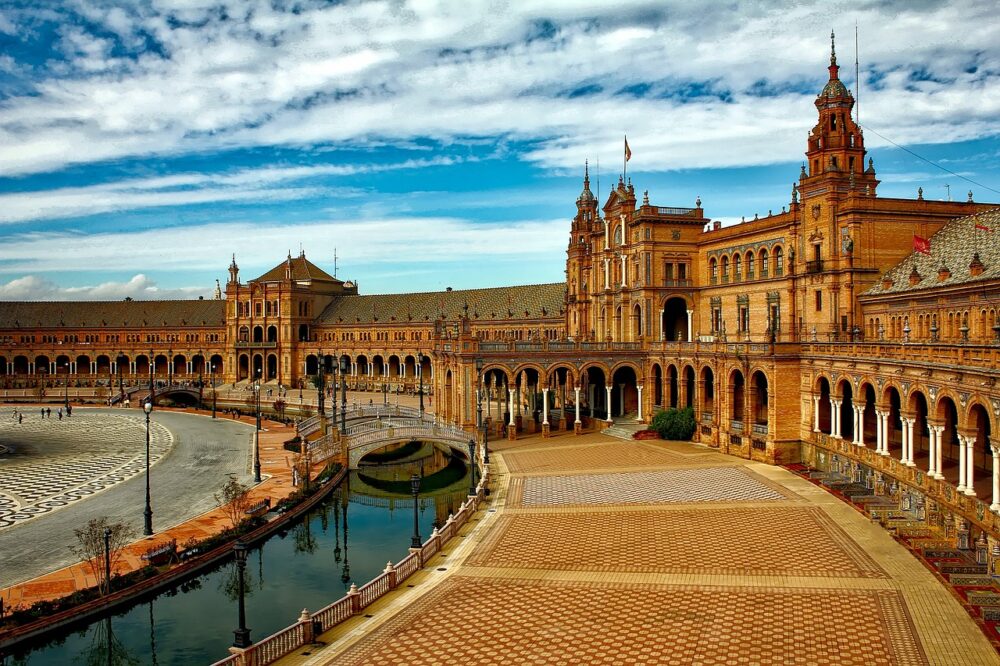
Andalusia is the most populous region of Spain, comprising 8 provinces: Almeria, Cadiz, Cordoba, Granada, Huelva, Jaen, Malaga, and Seville. It is home to first-class beach resorts, great Moorish cities, the only true desert in Europe — Tabernas, and the highest mountain in Spain – Moulacen (3478 meters).
Andalusia’s coast is washed by the Mediterranean Sea and the Atlantic Ocean. There are many beautiful beaches along the approximately 1,000-kilometer-long coastline. The most popular resorts in the region are Costa del Sol, Almeria, and Costa de la Luz.
When traveling around Andalusia, do not miss the opportunity to visit the ancient Moorish cities — the capital of the region, Seville, Cordoba, and Granada, where the famous Alhambra Palace is located. Fans of Pablo Picasso’s work should visit Malaga, the artist’s hometown. Lovers of beautiful scenery will delight in the city of Ronda, located on the Sierra Ronda ridge and surrounded by the 130-meter-deep El Tajo gorge. And connoisseurs of good wine will not be able to pass by the city of Jerez de la Frontera, where there are nine world-famous wine cellars.
Andalusia is famous for its festivals, carnivals, and fairs. The most popular event of the year is Fiesta de San Juan (Night of St. John), which is celebrated on the night of June 23-24. The most important part of the culture of the region has become flamenco dance, without which it is impossible to imagine any holiday.
And of course, one cannot fail to mention the cuisine of Andalusia. One of the most famous local dishes is gazpacho. This cold soup of tomatoes, cucumbers, peppers, garlic, bread, vinegar, and olive oil can be served as an appetizer or a refreshing drink. The most intriguing delicacy is considered to be ajo blanco — a soup made from almonds, garlic, breadcrumbs, vinegar, olive oil, and water, served with grapes or melon pieces.
Madrid
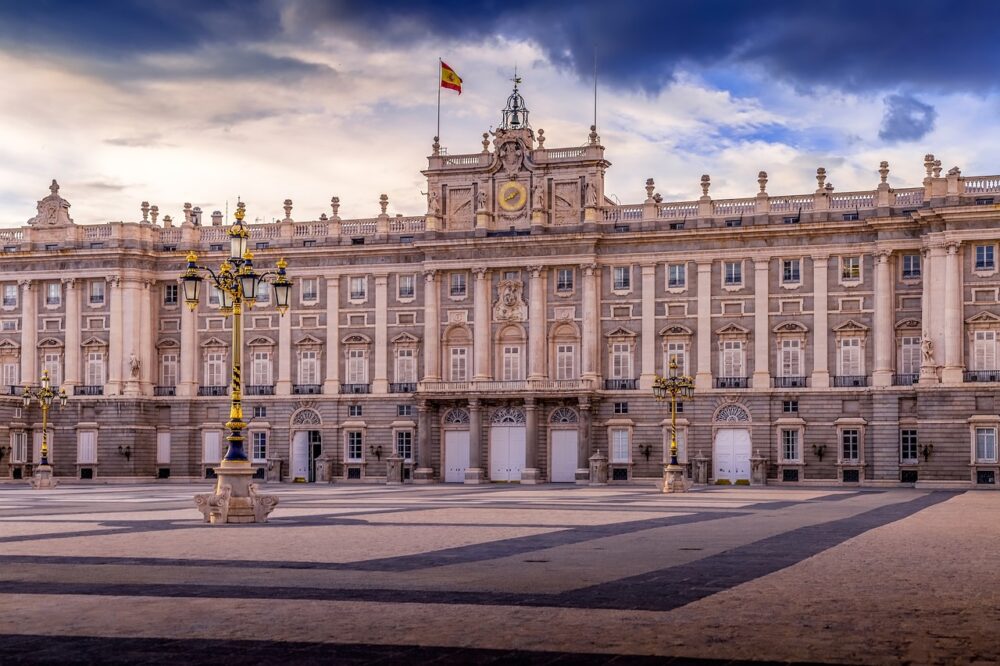
Madrid is an autonomous community, comprising only one province with the same name and located in the center of the Iberian Peninsula. Its capital and largest municipality is the city of Madrid, which is also the capital of the country. Its magnificent palaces, picturesque parks, world-class museums, wonderful galleries, incredible fountains, and huge football fields attract hundreds of thousands of tourists every year.
The architectural appearance of Madrid is a harmonious combination of past and present. The Royal Palace and medieval buildings on the main Plaza Mayor square stand alongside modern skyscrapers and office centers. Some of the most interesting things to do in Madrid include a visit to the Prado Museum, walks through Puerta del Sol and Retiro Park, shopping at El Rastro Market and Mercado de San Miguel, a tour of the Santiago Bernabeu Stadium, tasting churros in San Gines and, of course, a flamenco show.
There is also a lot to see in the area around Madrid. Not far from the capital is the city of Alcala de Henares, where Cervantes spent his childhood. It is home to one of the largest universities in Spain. In Aranjuez, you can see a stunning 18th-century palace and stroll through gardens modeled after those at Versailles. In Manzanares el Real, you’ll explore an impressive Gothic castle, while in San Lorenzo de El Escorial, a huge monastery built by Felipe II.
In Madrid, gourmets will have a unique opportunity to try dishes from all regions of Spain. Local delicacies include the Cocido Madrileño stew, Madrileña callos, bacalao a la Madrileña salted cod, potaje de garbanzos, a thick pea soup, and torrijas bread pudding.
Asturias
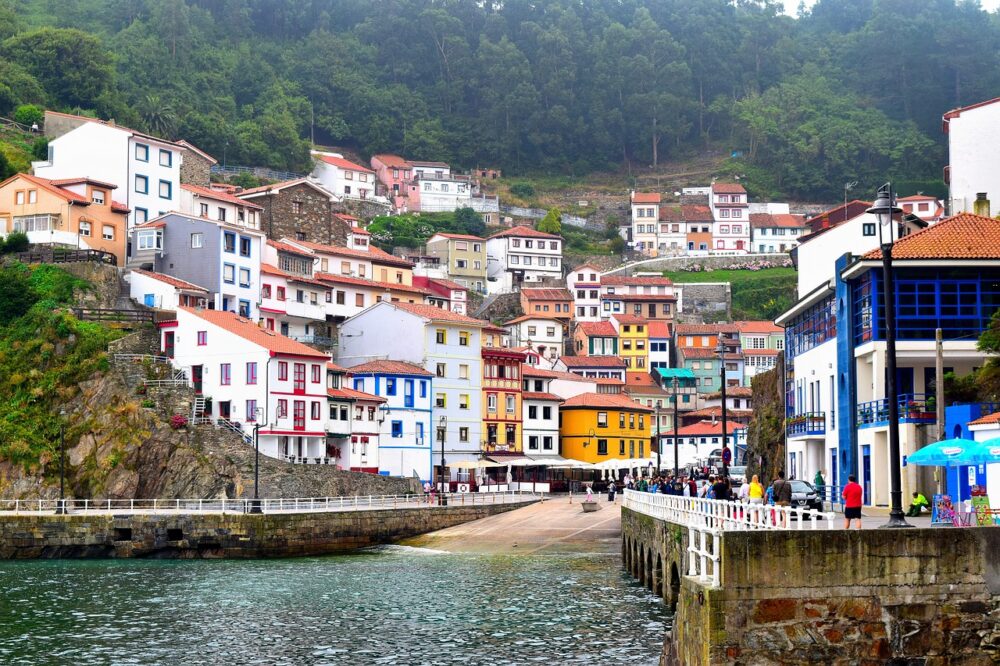
The autonomous community and province of Asturias is located in the mountainous region of northwestern Spain. Picturesque beaches, stunning mountain views, lush forests, charming towns and villages — it’s not called “Spanish Paradise” for nothing. Here every traveler will find something to his liking.
The Celtic influence is evident in the traditions, customs, music, and folklore of Asturias. An important part of the region’s cultural heritage is playing the bagpipes, known as the gaita. In addition, Asturias is home to one of the most famous monuments of prehistoric art in the world – the Tito Bustillo Cave, where cave paintings dating back more than 35,000 years have been preserved.
The Northern Way of the Camino de Santiago passes through Asturias, attracting pilgrims from all over the world. The region’s coastline, which stretches for more than 321 kilometers, is replete with beautiful beaches and breathtaking seascapes.
What to do in Asturias for a traveler? Explore the Picos de Europa National Park, visit the Covadonga Sanctuary, canoe the Sella River, stroll through Oviedo’s Old Town, and visit picturesque fishing villages. Set aside a few days to relax on the region’s beautiful beaches, such as Playa del Silencio and Playa de Gulpiyuri. Don’t miss the opportunity to discover the excellent cuisine of Asturias, combining Celtic, Roman, and Moorish traditions. The region is famous for its cider culture, as well as delicious cheeses, including the famous Queso Cabrales.
The Balearic Islands
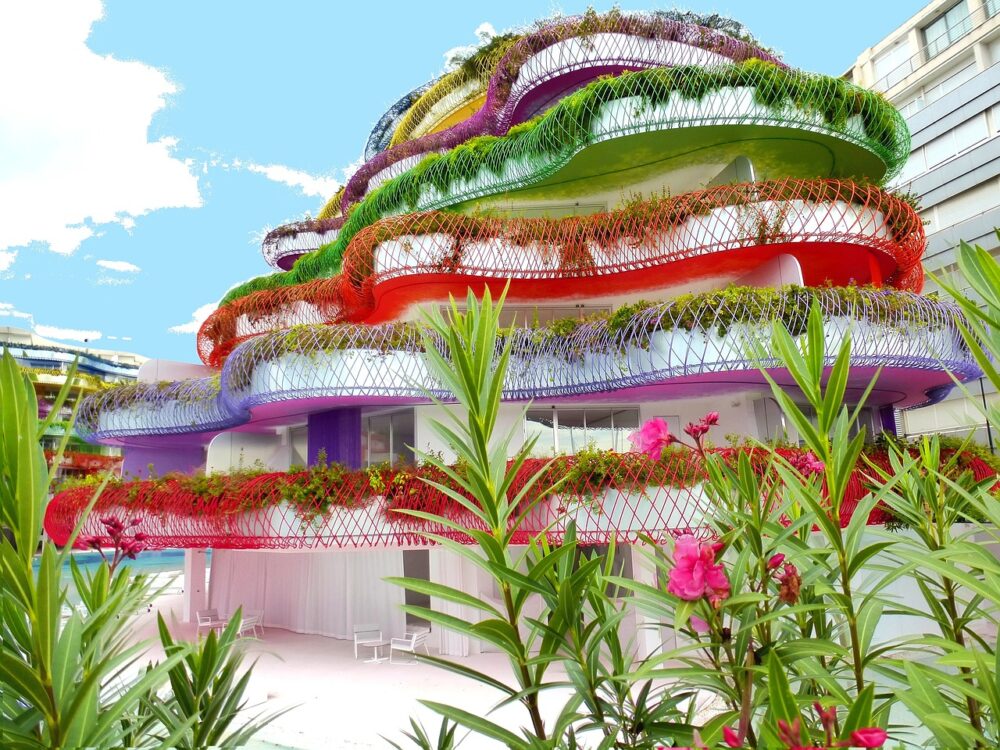
The Balearic Islands are located in the western Mediterranean Sea, off the eastern coast of the Iberian Peninsula. Mallorca, Menorca, Ibiza, and Formentera, which form part of the archipelago, are popular tourist destinations. Their beaches are white sand, turquoise water, picturesque bays, and an ideal climate that attracts millions of people from all over the world. From the nightlife and party scene of Ibiza to the laid-back atmosphere of Menorca, each island has something special to offer.
Majorca
Mallorca is the largest island of the Balearic archipelago. Its capital is the city of Palma, also known as Palma de Mallorca. It is easily accessible both by sea and by air. Palma de Mallorca airport, which is one of the busiest in Spain, receives flights from all over Europe.
The best way to start exploring the island’s capital is to visit the Palma de Mallorca Cathedral, which took 117 years to build. It became the resting place of Spanish kings and boasts the largest Gothic rosette in the world. Also worth exploring is the Royal Palace of La Almudaina, stroll along Passeig des Born, explore contemporary art at the Es Baluard Museum, climb the walls of Bellver Castle, discover the secrets of marine life at the Palma Aquarium and be sure to treat yourself to local delicacies at the Mercat de l’Olivar.
After getting to know the capital, explore its surroundings. Head to the charming town of Soller for a ride on a vintage tram through orange groves, or to the village of Deia, nestled in the scenic Tramuntana Mountains. Those who want to get acquainted with the culture and spiritual heritage of the island should visit the Sanctuari de Lluc.
The hallmark of Mallorca is its beaches, of which there are more than 200. The most popular among them are the city beach of Alcudia, which stretches for almost 10 kilometers, Cala Pi Cala Millor, Es Trenc, Cala Deia, and Palma Nova. The island’s iconic natural attractions are the Serra de Tramuntana mountain range and the Caves of Drach.
Menorca
Tourists go to Menorca, the second largest island of the Balearic archipelago, not only for the white sand beaches. There are many archaeological sites and natural attractions, as well as opportunities for active entertainment. In addition, Menorca is a great place for a family holiday.
There are three major cities on the island. Mahon, whose history dates back to the Carthaginians, is the capital of Menorca and its largest port. The most popular local attraction is the gin distillery, built during British rule. Places worth visiting also include the historic harbour, the 17th-century La Mola fortress, and the Church of Santa Maria.
The former capital of Menorca, Ciutadella, is located on the western side of the island. The most important sights of the city are concentrated in its historical center. As you stroll through the streets of the ancient citadel, be sure to visit the cathedral, which used to be a mosque, the defensive tower of Castel San Nicolas, the Church of San Francesco, and the Arab baths.
Connoisseurs of fresh seafood should head to Fornells, a former fishing village and favorite vacation spot of the Spanish royal family. The city is famous for its excellent restaurants, whose specialty is lobster stew (caldereta de langosta). In addition, several good beaches are popular among water sports enthusiasts.
The top five beaches in Menorca include Cala Galdana, Cala en Turqueta, Cala Pregonda, Platja de Son Bou, and Cala Mitjana. Fans of active entertainment should go hiking to the highest peak of the island — Monte Toro, walk along the ancient coastal path Cami de Cavalls, or go sailing. Families with children will enjoy the Aquarock Kartingrock amusement park, AquaRock, and Club San Jaime water parks.
Ibiza
Ibiza has long been synonymous with clubbing and vibrant nightlife. But besides parties, there is something to do here. The island is a popular destination for families – you just need to choose the right resort. It is also famous for its beautiful beaches and scenic hiking trails.
Nightclubs are the most popular entertainment on the island. But partygoers should take into account that drinks here are very expensive. In addition, most establishments require a dress code. The most popular nightclubs are located in the vicinity of the island’s capital, Ibiza, as well as the large city of San Antonio. The oldest establishment in Ibiza is Pacha, which opened in 1973.
Those who don’t like noisy parties but want to have fun can go to bars to listen to live music. Unlike clubs, which start working closer to midnight, they open in the afternoon.
The Ibiza coast offers excellent conditions for swimming and water sports. Those who like a relaxing holiday should go to the northern part of the island, where the quiet beaches of Aguas Blancas, Benirrás, and Cala d’en Serra are located. And if you don’t mind noisy company, you will enjoy the most popular resorts of Ibiza – Playa de Talamanca, Playa d’en Bossa, and Playa es Pouet, as well as the town of Santa Eulalia del Río.
Formentera
Formentera is the smallest of the Balearic Islands. It is located next to Ibiza and is a complete antithesis position. Lovers of a relaxing holiday and fans of hippie culture come here. Formentera has become famous for its many picturesque white sand beaches, many of which allow nude sunbathing. The island is mentioned in the novels of Jules Verne and the songs of Pink Floyd. Every year a jazz festival is held here, in which aspiring and famous musicians take part.
The first thing to do when you arrive in Formentera is to go to the beach. Here you will find fine white sand, clear turquoise water, and an atmosphere of tranquility. The best beaches on the island are Ses Illetes, Levante, Cala Saona, Es Pujols, Es Migjorn, and Es Arenals.
Formentera is a popular destination for diving enthusiasts. The cargo ship Don Pedro, more than 140 meters long, sank near the island. It has now become a famous underwater attraction.
One of the hallmarks of the island is the lighthouses, which offer excellent views of the sea and coastal cliffs. Be sure to climb to the top of the La Mola lighthouse, located at the highest point of Formentera, and explore Cap de Barbaria, which is often seen in films and TV shows.
Another popular activity in Formentera is touring its towns and villages. The island’s capital, Sant Francesc, is famous for its artisan markets and restaurants. The main attraction of the city of La Savina is the port. The villages of Sant Ferran, Es Pujols, Es Calo de Sant Agustí, and El Pilar de la Mola have become famous for their whitewashed houses in a classic Mediterranean style.
Basque Country
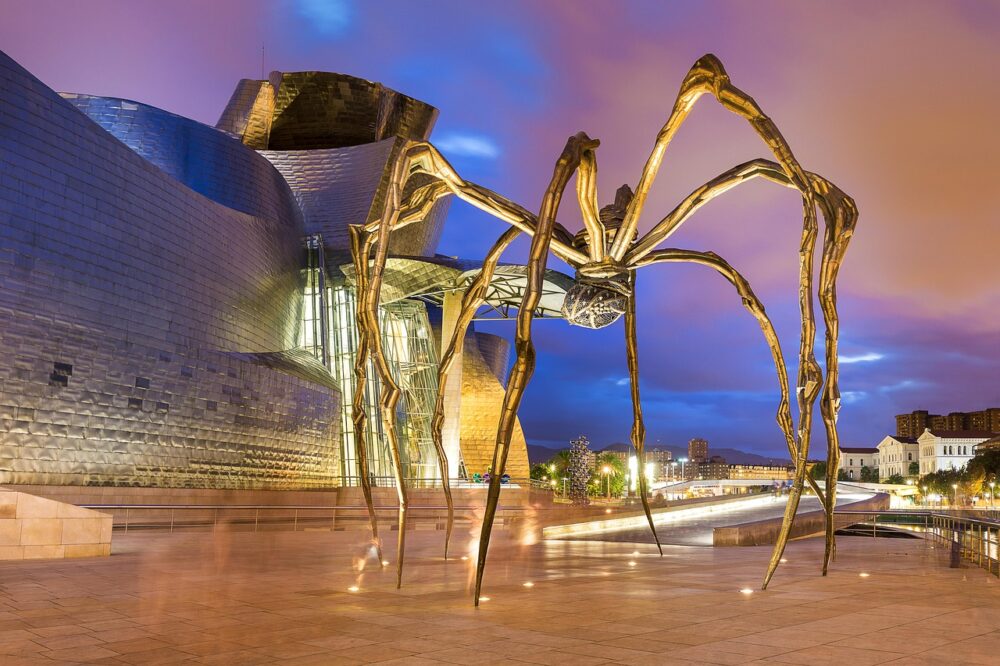
The Basque Country, located in northern Spain, includes the provinces of Alava, Vizcaya, and Guipuzcoa, and also surrounds the enclave of Treviño, belonging to the community of Castile and Leon. The region does not have an official capital, but the actual capital is the city of Vitoria-Gasteiz, where the parliament and the seat of government are located.
The main tourist destinations of the Basque Country are the three largest cities —Vitoria, Bilbao, and San Sebastian. Each of them has its airports, but the sky harbor of Bilbao receives most international flights. It used to be an industrial city but became popular with travelers after the Guggenheim Museum opened there in 1997. This establishment amazes with its stunning exhibition and unusual building design. Connoisseurs of beauty should also visit the nearby Museum of Fine Arts. Football fans will enjoy a tour of the San Mamés stadium, where the Athletic Bilbao team plays.
Vitoria-Gasteiz or Vitoria is a vibrant city and one of the top five best places to live in Spain. It is an important university center and hosts many popular festivals, including the Azkena Rock Festival, FesTVal, Vitoria-Gasteiz Jazz Festival and Virgen Blanca Festivities. Vitoria’s Old Town has some of the best-preserved medieval streets and squares in the region. In addition, Vitoria-Gasteiz is one of the few cities with two cathedrals. In its surroundings, there are famous wineries, ancient ruins, and several medieval fortresses.
San Sebastian is one of the most prestigious resorts in Spain. Due to the great popularity of the city, real estate prices here are among the highest in the country. San Sebastian is located on the famous La Concha beach, and nearby are Playa de Ondarreta and Playa de la Zurriola, popular among surfers. Some of the city’s most interesting attractions include the Aquarium, the Naval Museum, and Urgull Hill, which offers superb views. San Sebastian is a real Mecca for gourmets. There are more Michelin-starred restaurants here than in any other city in Spain.
A few words should be said about the cuisine of the Basque Country, which is an important element of the local culture. When you come here, be sure to try the salted and dried cod, squid cooked in its ink, beef steaks, and pintxos — the Basque version of tapas. Txakoli is considered the best wine in the region.
La Rioja
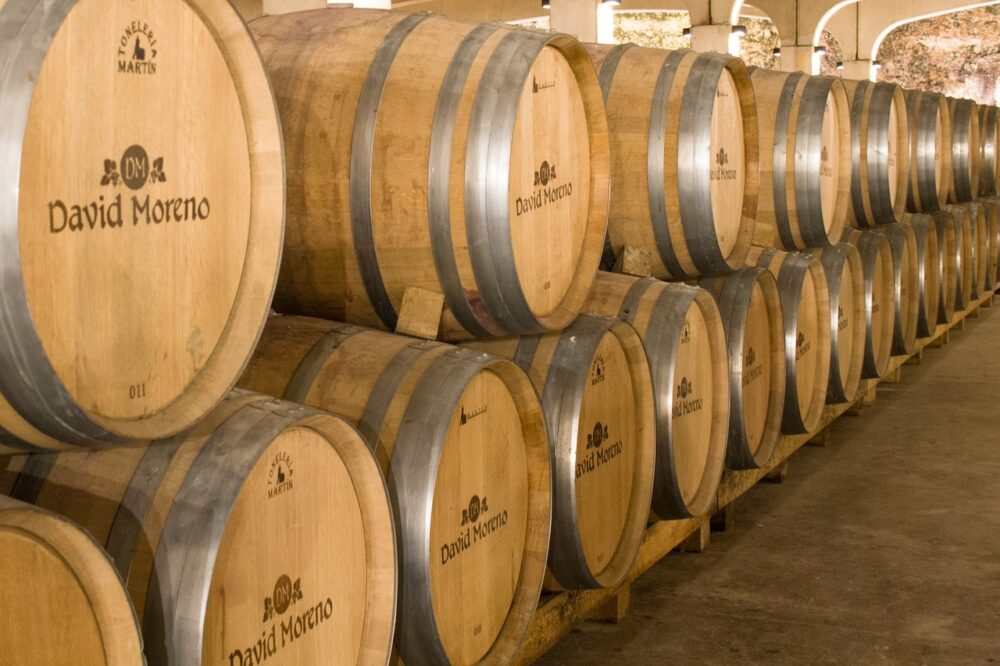
The autonomous community and province of La Rioja, whose capital is the city of Logroño, is located in the north of the Iberian Peninsula. The region is famous for its excellent world-class wines, picturesque vineyards, and charming medieval villages. La Rioja’s landscapes are breathtaking and its natural parks are a haven for hikers. In addition, the province is part of the Camino de Santiago pilgrimage route, and the city of Santo Domingo de la Calzada is an important stop along the route.
The region’s capital, Logroño, is a perfect blend of ancient and modern cultures. Its historical center is enchanted with quaint streets and beautiful squares, the Monastery of Yuso and Suso houses many medieval manuscripts, and the Santa Maria de la Redonda Cathedral amazes with its majestic architecture.
The most popular activity in Rioja is touring its many wineries. During wine tours you will visit charming villages, vineyards, family cellars, and taverns and, of course, you will be able to taste excellent wines. The best things to do in Rioja for connoisseurs of noble drinks are also a trip to the famous Marques de Riscal winery, participation in the Batalla del Vino festival in the city of Haro, and a visit to the Dinastia Vivanco Museum of Wine Culture, located in Briones.
Hikers will love a trip to the Sierra de Cebollera Natural Park, which is located just 50 kilometers from Logroño. There are 9 walking routes across its territory, leading through dense forests, past stunningly beautiful waterfalls and majestic mountain peaks.
Catalonia
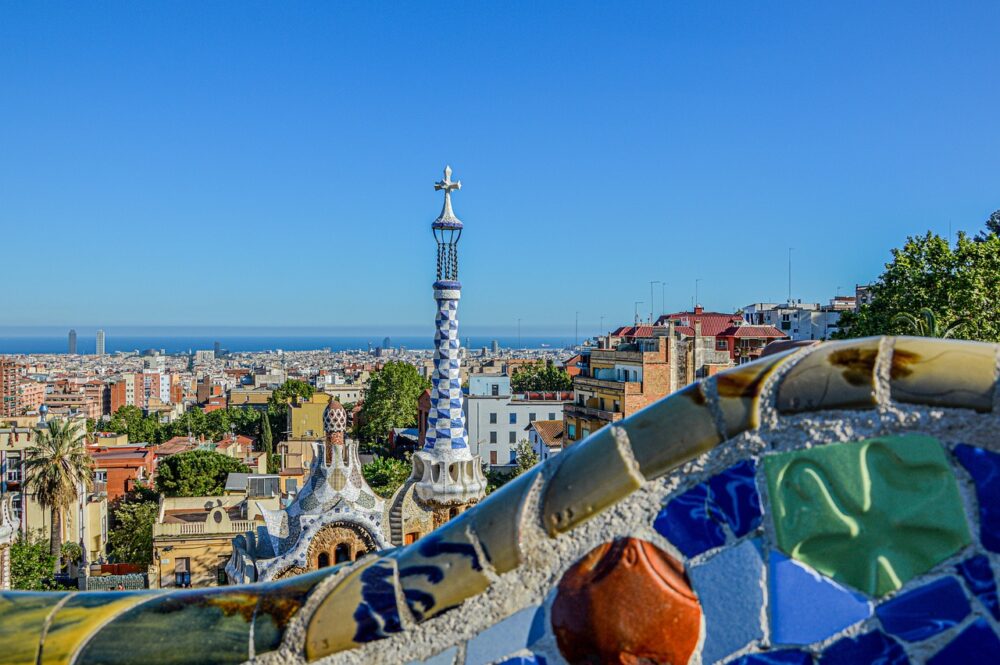
Catalonia, located in the north of Spain, is one of its most vibrant regions. It has its own language (Catalan) and is famous for its unique culture, stunning architecture, numerous museums, and beautiful landscapes. Catalonia includes four provinces — Barcelona, Girona, Lleida and Tarragona. The capital of the region and the most popular tourist destination is the city of Barcelona.
Barcelona amazes its guests with the incredible architecture of Antoni Gaudi. Its crown jewels are the majestic Sagrada Familia and the breathtaking Park Güell. Also worth a visit are the lively Ramblas, the Gran Teatre del Liceu opera house, one of Europe’s largest food markets, the Mercat de la Boqueria, the Picasso Museum, and the National Art Gallery of Catalonia. The best view of Barcelona is from the Montjuïc hill. The city is also home to one of the world’s greatest football teams.
Barcelona is so amazing that many tourists spend their entire vacation here. But Catalonia is much more than its capital. Therefore, it is worth setting aside at least a few days to travel around the region. Wander through the medieval center of Girona, admire the majestic Lleida Cathedral, explore the Roman ruins of Tarragona, climb Mount Montserrat, and treat the kids on a trip to the country’s largest theme park, Port Aventura. Art lovers should travel through the so-called Salvador Dali Triangle, which includes the municipalities of Pubol, Portlligat, and Figueres.
Read also: Guide to Catalonia the birthplace of Gaudi and Dali
Murcia
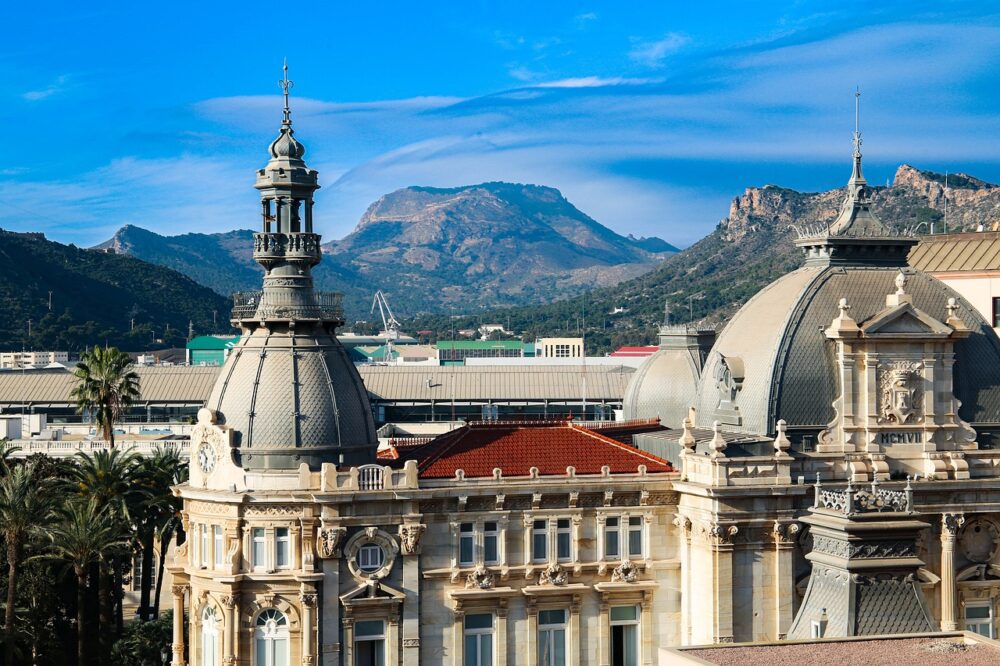
The autonomous community and province of Murcia is located in the southeastern part of the Iberian Peninsula, on the shores of the Mediterranean Sea. Tourists come here for the picturesque beaches, beautiful nature, fun festivals, and excellent cuisine. Agriculture is well-developed in the region. Some of the best citrus fruits in the country are grown here.
The capital of the province, the city of Murcia, was founded by the Moors in the 9th century. It is small, so all its attractions can be seen in one day while walking. The architectural pearl of the city is the cathedral in the Baroque style. It is also worth seeing the Episcopal Palace, the Santa Clara Monastery, and the Almudi Palace, walking along Malecon Boulevard, and visiting the Archaeological Museum of Murcia.
The most popular resorts in Murcia are La Manga, Aguilas, and Puerto de Mazarron. In summer it is crowded, but in spring and autumn, you can relax in relative silence. The city of La Manga, built on a narrow isthmus separating the Mar Menor lagoon from the Mediterranean Sea, is very famous among tourists. The water in the lagoon is so warm that you can swim in it all year round, and the depth of up to 8 meters is ideal for water sports.
Extremadura
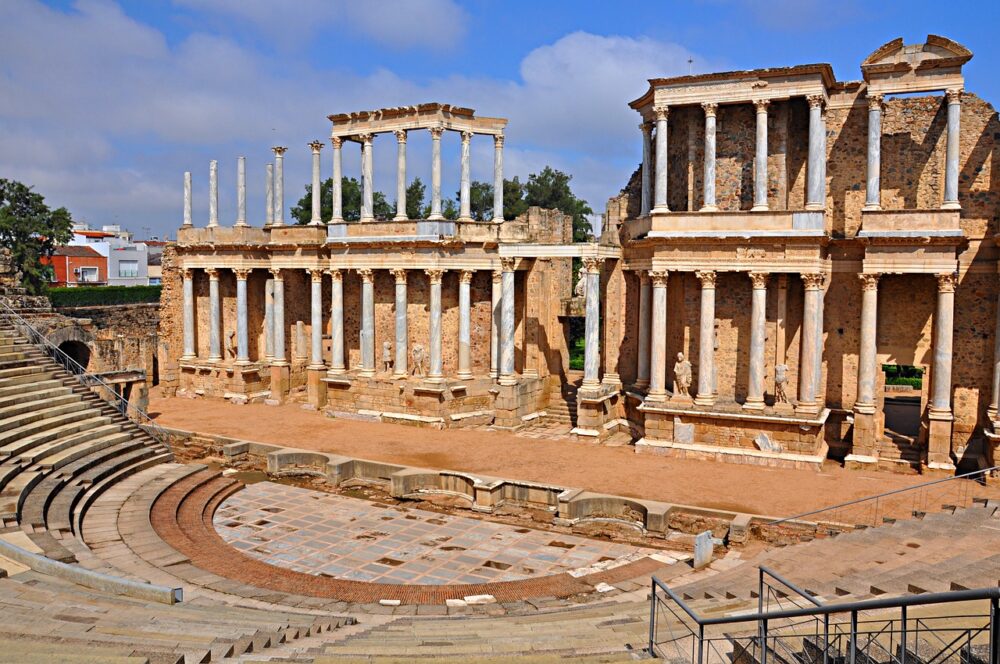
The autonomous community of Extremadura, which includes the provinces of Caceres and Badajoz, is located in western Spain and borders Portugal. This is one of the least populated regions of the country, which most tourists have not heard of. However, Extremadura has something to surprise its guests. It is famous for its historical cities, natural beauty, fun festivals, and ancient customs that are still observed today.
The capital of Extremadura, Merida, is one of the region’s outstanding attractions. In the past, it was the richest city of the Roman Empire. To this day, many buildings from that era have been preserved here — a theater, a temple, a circus, an amphitheater with 14,000 seats, an eight-kilometer aqueduct, and the longest bridge in the country, built by the Romans. During the Merida Festival, you can watch Roman and Greek plays.
In terms of popularity, Merida is not inferior to the Moorish city of Casedes, surrounded by fortified walls with impressive watchtowers. Many examples of Roman and Arabic architecture, as well as buildings from the Renaissance, have been preserved here.
When exploring Extremadura, be sure to visit Guadalupe. The city became an important pilgrimage center after a statue of the Virgin Mary was found here in the 14th century and was named “Our Lady of Guadalupe.” Guadalupe is home to the famous Monastery of Santa Maria de Guadalupe, which has become a UNESCO World Heritage Site.
Extremadura’s most popular natural attraction is the Sierra de Gredos mountains. The Monfrague Natural Park is also worthy of attention, where you can see many rare species of migratory birds.
Galicia
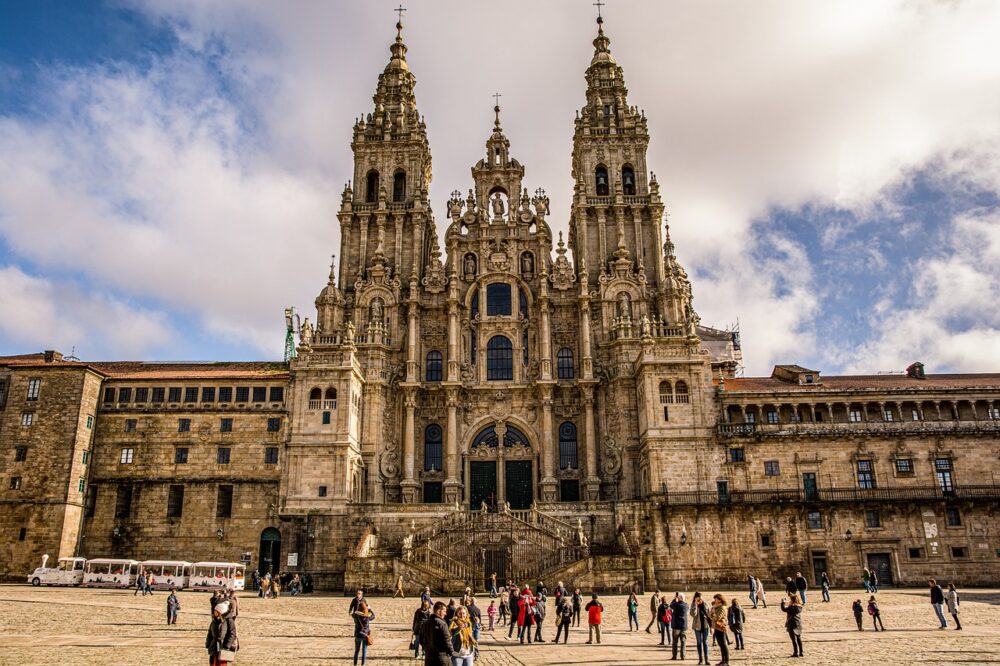
Galicia is a region with Celtic roots located in the northwest of Spain. It includes the provinces of La Coruña, Pontevedra, Lugo, and Ourense, and is bordered by the Atlantic Ocean to the west and the Cantabrian Sea to the north. Here you will find beautiful beaches, hospitable fishing villages, and excellent seafood.
The capital of Galicia, Santiago de Compostela, is one of the most atmospheric cities in Spain. The Cathedral of Santiago de Compostela, located here, where the relics of St. James are kept, is the final destination of the Way of Santiago. Walking along the streets, you can meet thousands of pilgrims who traveled 772 kilometers on foot to get here. The city has many parks and beautiful medieval streets, and in the summer there is live music in its squares.
The largest city in Galicia, Vigo, is located at the source of the river of the same name. It is famous for its fishing port, which is considered one of the largest in the world. And its historic fishing quarter is lined with restaurants offering the freshest oysters. The best view of the city is from Mount Castro, on top of which stands a castle built in 1665.
The region’s former capital, La Coruña, is often called the city of glass due to its unusual glass balconies. Its main landmark, depicted on its flag and coat of arms, is the Roman Tower of Hercules. It is the oldest surviving lighthouse, having been in operation since the 2nd century AD. The tower is surrounded by a large park with a beautiful golf course.
Many festivals in Galicia retain elements of Celtic and ancient pagan religions, which are intertwined with Catholic traditions. The most interesting events are the Semana Santa festivities in Ferrol, the Festival of Lace Handkerchiefs in Camarinhas, and the Celebration of Ribeiro wine in Ribadavia. Many celebrations feature authentic Galician music.
Galicia is famous for its seafood dishes. This is the best place to try octopus for the first time. Another signature dish of the region is Empanada Gallega. This is a variation of the Cornish tuna and tomato pie. Connoisseurs of noble drinks will love Ribeiro’s white wines.
Bookmark our article – it contains a lot of useful information.
If you liked the article, subscribe to our newsletter and Telegram
